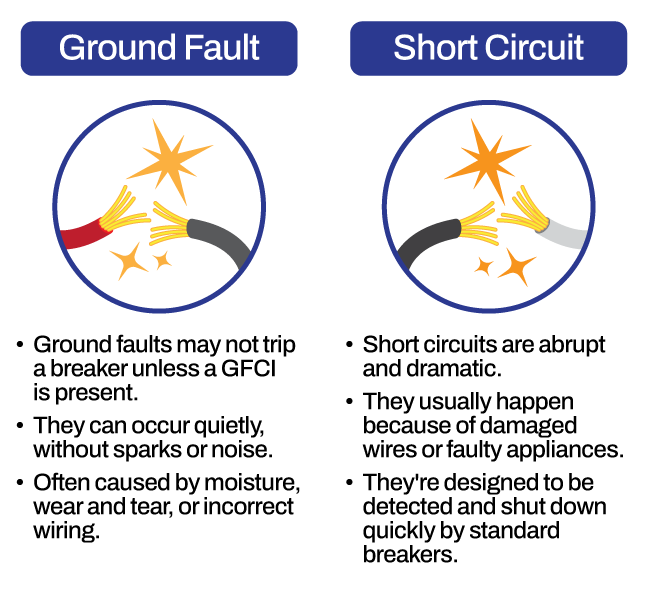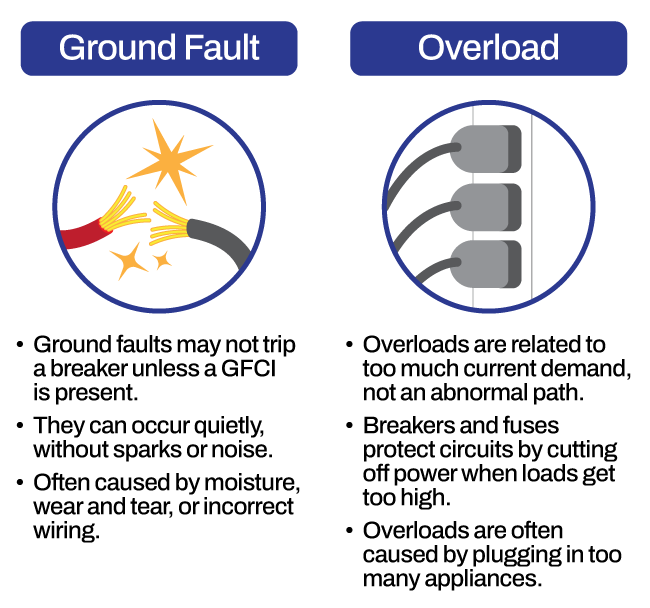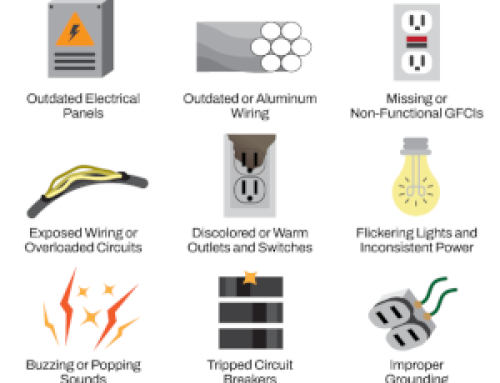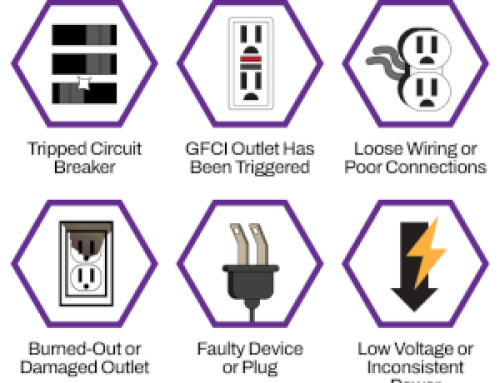Electrical hazards don’t always flash, spark, or smoke. Some of the most dangerous threats to your safety are invisible, like ground faults. These hidden risks can shock you without warning, start fires behind walls, or silently damage your appliances over time.
In today’s connected homes, where we rely on electricity for everything from entertainment to safety systems, understanding ground faults is more important than ever.
In this article, we’ll explain what a ground fault is, why it matters, and how you can stay protected.
What Is a Ground Fault?
At its core, a ground fault happens when electricity strays from its intended path and finds a shortcut to the ground. This might occur when an exposed wire touches a metal surface or when moisture causes current to leak from an appliance into surrounding material.
Normally, electricity flows through a closed circuit, like from your breaker panel to a light fixture and back. But when electricity finds an unintended path to ground, especially through a person or conductive object, it becomes hazardous.
Why Ground Faults Are So Dangerous
Ground faults don’t just damage devices—they endanger lives and property.
Here’s why they demand immediate attention:
- Life-Threatening Shock Risk: As little as 5 milliamps of current—barely enough to power a night light—can cause serious harm or death when passed through the human body. High-risk zones like bathrooms, kitchens, outdoor patios, and basements amplify this danger because water conducts electricity.
- Silent Fire Hazard: Unlike other electrical problems, ground faults often occur without obvious warning signs. Undetected ground faults can cause electrical arcs behind walls, igniting insulation or framing materials where fires can spread undetected.
- Code Compliance Issues: Modern building codes require GFCI protection in high-risk zones. Homes lacking proper GFCI outlets may fail electrical inspections and create liability issues.
- Equipment Damage: Stray electricity can silently damage motors, electronics, and sensitive components, leading to premature failure of major systems like HVAC units, refrigerators, or sump pumps.
7 Common Causes of Ground Faults
Ground faults are more common than you might think, and they often go unnoticed until damage occurs or a GFCI trips.
Some of the most frequent causes include:
1. Damaged Wire Insulation
Electrical wire insulation becomes brittle and cracks over time, especially in older homes. When insulation fails, exposed wires can contact grounded surfaces like metal boxes or damp materials.
2. Water Leaks and Moisture
Even small, unnoticed leaks behind appliances or in basements can create dangerous conditions. Water provides an easy path for electricity to reach the ground, bypassing normal circuit protection.
3. Loose Wire Connections
Thermal expansion and contraction gradually loosen electrical connections inside outlets, switches, and junction boxes. These loose connections can allow current to arc to nearby grounded surfaces.
4. Improper DIY Wiring
Amateur electrical work often skips important safety steps like proper grounding or correct wire sizing. Missing ground wires or code violations create multiple opportunities for ground faults to occur. You should always have a professional handle this type of work.
5. Accidental Wire Damage
Nails or screws driven into walls during home renovations frequently puncture electrical wires. This commonly happens when hanging pictures, installing shelving, or mounting TVs near electrical circuits.
6. Worn Appliances and Cords
High-use items like space heaters, power tools, and kitchen appliances develop frayed cords or internal wiring damage. These defects can allow current to leak through the appliance housing to the ground.
7. Pest Damage
Rodents frequently chew through electrical cables in walls, attics, and crawl spaces. This creates exposed wires that can easily contact grounded surfaces like metal framing or pipes.
How Is a Ground Fault Different from Other Electrical Issues?
Electrical problems can show up in several forms—short circuits, overloads, and ground faults are the most common.
While they all involve disruptions in the normal flow of electricity, they behave differently, have different causes, and require different solutions.
Here’s how ground faults stand apart:
Ground Fault vs. Short Circuit
A short circuit occurs when a hot (live) wire comes into direct contact with a neutral wire or another hot wire. This causes a surge of current to flow along an unintended path with little resistance. The result is usually an immediate trip of the circuit breaker, accompanied by sparks, heat, or even a burnt smell.

- Short circuits are abrupt and dramatic
- They usually happen because of damaged wires or faulty appliances
- They’re designed to be detected and shut down quickly by standard breakers.
A ground fault, on the other hand, happens when electricity escapes its intended circuit and travels to the ground, often through conductive materials like water, metal, or even a person.
- Ground faults may not trip a breaker unless a GFCI is present
- They can occur quietly, without sparks or noise.
- Often caused by moisture, wear and tear, or incorrect wiring.
Ground Fault vs. Overload
An overload occurs when too many devices draw current on the same circuit, exceeding its rated capacity. This increases heat in the wiring and can potentially lead to melted insulation or fire if not protected.

- Overloads are related to too much current demand, not an abnormal path
- Breakers and fuses protect circuits by cutting off power when loads get too high.
- Overloads are often caused by plugging in too many appliances, like space heaters or hair dryers, into the same outlet.
In contrast, a ground fault doesn’t require excessive current—it just means electricity is leaking where it shouldn’t.
That’s why overload protection alone isn’t enough—you need GFCI protection to detect and interrupt ground faults.
Frequently Asked Questions
Stay Grounded, Stay Safe
Ground faults are one of the most common and preventable electrical dangers in modern homes. While invisible to the eye, they pose very real risks—from shocks and fires to appliance damage and code violations.
The good news? Protection is easy, with the right safeguards in place.
Brand Home Service offers electrical repair in Lafayette, IN, and professional inspections to assess your home’s ground fault risks, test GFCIs, and recommend the right upgrades to keep your home compliant and safe.
Schedule your electrical inspection with Brand Home Service today—and stay grounded the safe way.



